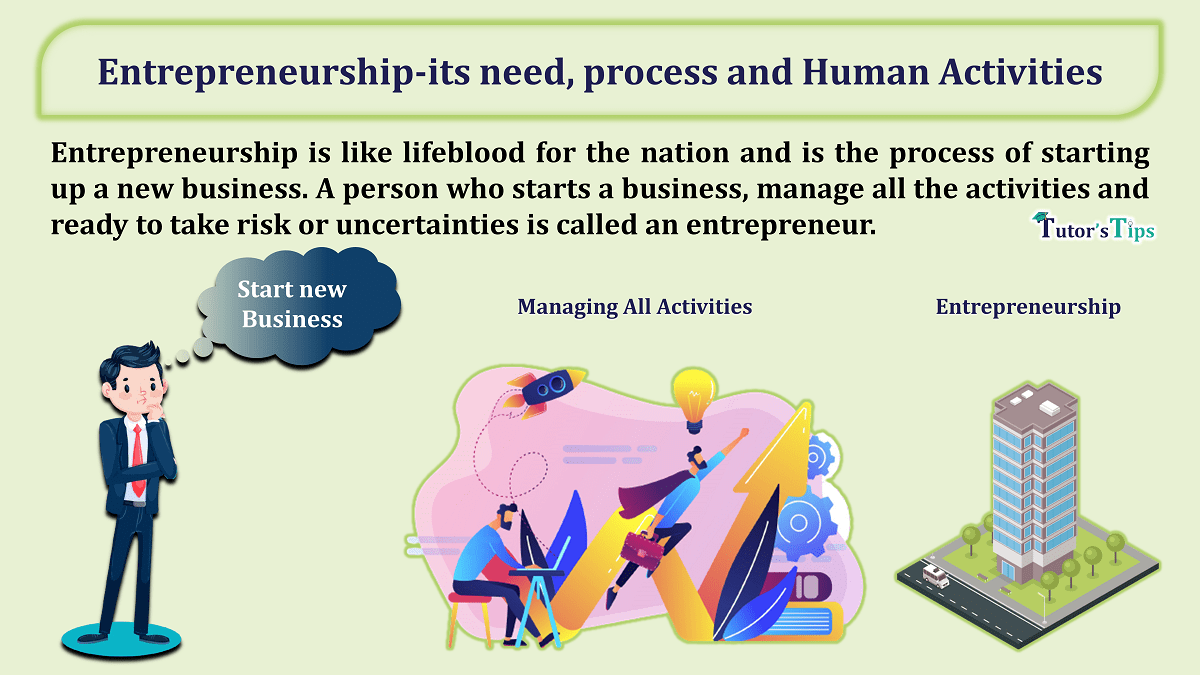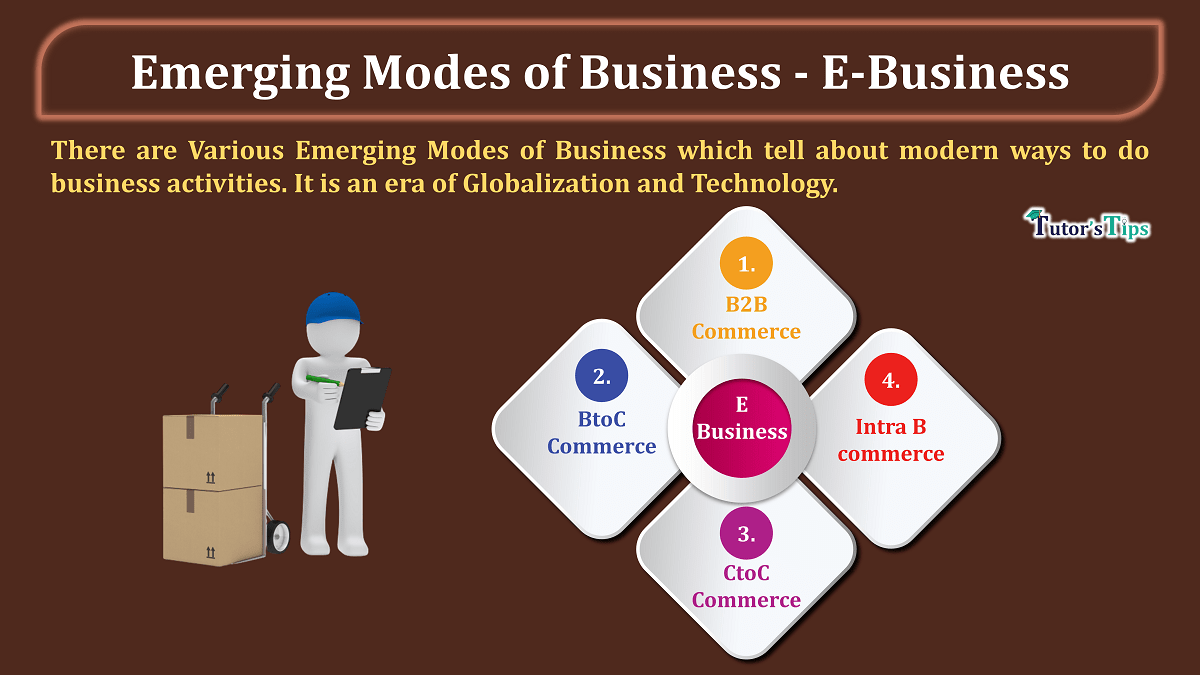Entrepreneurship is like lifeblood for the nation and is the process of starting up a new business. In other words, a person who starts a business, manage all the activities and ready to take risk or uncertainties is called an entrepreneur.
Meaning of Entrepreneurship:
It means that activity in which the individual starts the business, manages and controls all the business activities with the aim to earn a profit.
Definition According to different authors:
“Entrepreneurship is any kind of innovative function that could have a bearing on the welfare of an entrepreneur.”
-Joseph A. Schumpeter (1934).
“Entrepreneurship is the purposeful activity of an individual or a group of associated individuals, undertaken to initiate, maintain or aggrandize profit by production or distribution of economic goods and services.”
– A.H.Cole (1959)
Need for Entrepreneurship:
It is important for social development and national growth. There are some important points which are as follows:
1. Lifeline of the nation:
Industrialisation helps to measure the growth and development of any country. In other words, we can say that every nation must try to establish more and more enterprises for development. U.S., U.K. are the developed countries only because of well-established enterprises.
2. Employment opportunities:
Industrialisation not only facilitates self-employment but also provides employment opportunities to society.
3. Benefits to society:
entrepreneurs try to adopt new methods of production to produce better quality products at low cost for the people and raise the standard of living by setting up industries in backward areas.
Advertisement-X
4. Growth of the economy:
Entrepreneurs use new technology for the production of goods and services which results in the development of society and the economy.
Process of entrepreneurship:
Before starting up the business there are some important steps which are followed by the entrepreneurs:
1. In the first step entrepreneurs assess themselves by their strengths and weaknesses.
2. Then they identify the problem, need, and wants so that they can get an opportunity to overcome the problem.
3. In this step, the entrepreneurs are trying to develop new ideas through discussion, creativity to solve the problem and meet the basic needs of the customers.
4. Under this step, entrepreneurs make plans, research, and strategies for the business.
5. In this step, entrepreneurs raise capital and try to attract venture capitalists by using the business plan and then start up the business.
6. Entrepreneurs try to expand the business, develop more customers, and also make changes according to the environment.
Human activities:
Activities that are performed by humans beings are called human activities. The activities which are directly generating money are called economic activities and other side those activities which are related to personal satisfaction are called non-economic activities.
Types of human activities:
human activities are mainly classified into two categories :
Advertisement-X
- Economic activities
- Non-economic activities
1. Economic activities:
Occupations, jobs, or activities which are performed by the people with the purpose of obtaining profit are called economic activities. The purpose of these activities is to create wealth or assets for the business. Production and distribution are important elements of economic activities.
For example:
The production sector where goods are produced to earn profit/income. For example Maggi, chips and coke etc.
The distribution of goods means how the products are move through various stages to reach the destination. The distribution stages are categorized as wholesalers and retailers. wholesalers buy goods from producers and retailor buy goods from wholesalers then sell to the customer.
Types of economic activities:
These are broadly classified into three categories:
- Business
- Profession
- Employment
1.Business:
It is an activity that deals with the buying and selling of goods and services for mutual gain. It is an integral part of economic activities which are directly concerned with money.
For example, shopkeepers/retailers purchase grocery items from wholesalers and sell them to customers.
2.Profession:
Profession means all those activities which require special knowledge and skills. People who are connected with these activities are called professionals.
For example, doctors are in the profession of medicine and are governed by the Medical Council of India.
3.Employment:
It means when an individual works regularly for another person and earn money in return. These individuals are called employees. A person who employs these people is called the employer.
For example, working in colleges, banks, companies, showrooms, as a clerk, peon, sales executive.
Advertisement-X
2. Non-economic activities:
Activities that are related to the psychological satisfaction of the people are known as non-economic activities. The result of these activities is not to create wealth but it gives mental satisfaction. Such kind of activities provides happiness and peace to the people.
For example 1)paying charity, social service(providing food to below poverty line people.
2)providing shelter to homeless people), any work related to the safety of the environment.
Non-economic activities also include family-oriented activities(helping family members in their work).
Religious activities(going to the temple and pay some amount of money for the construction purpose or for any purpose related to the religious ceremonies) etc.
Commerce and its classification:
It refers to all those activities which are directly or indirectly helping in the distribution of goods and services to the consumers. Commerce is the activity of buying and selling goods on a large scale rather than production. We can classify commerce into two categories:
- Trade
- Aids to trade
1. Trade:
It is an integral part of commerce. It includes buying and selling goods and services. Trade generates a link between the manufacturer and the consumer. Trade can be further categorized into two parts:
1) Internal Trade:
It refers to buying and selling of goods and services within the geographical boundaries of the country with home currency. It is also called Home Trade. The internal trade further divided into two types:
a) Wholesale Trade: under this trade wholesalers buy products from the manufacturers in large quantities and sell to the retailers. In the wholesale trade, a large amount of capital is required to run the operations.
Advertisement-X
b) Retail trade: under this type of business retailers purchase small quantities of goods from the wholesaler and then sell to their ultimate consumers. Retailers maintain a variety of goods.
2) External trade:
It refers to buying and selling of goods and services over the national boundaries. In this type of trade two or more countries may participate. External trade involves various rules and regulations, licensing, customs etc.
External trade is of the following types:
- Export: It includes the sale of goods to a foreign country.
- Import: It includes buying goods from other nations.
- Entrepot: It refers to the import of goods from one nation and exports the goods to another nation/country.
2. Aids to trade:
It refers to all those activities which are performed by the service sectors. Rendering services are the main functions of these business activities.
The business activities are classified into various service sectors:
- Banking: Loan facilities to every sector related to trading.
- Insurance: Provide assurance regarding risk
- Transport: Service related to the movement of goods from the starting point to the final destination.
- Advertising: Giving information/knowledge.
Thanks for reading the topic.
please comment your feedback whatever you want. If you have any questions, please ask us by commenting.
References: –
Advertisement-X
Also, Check our Tutorial on the following subjects:
1.https://tutorstips.com/financial-accounting/
2.https://tutorstips.com/advanced-financial-accounting-tutorial/
Advertisement-X






